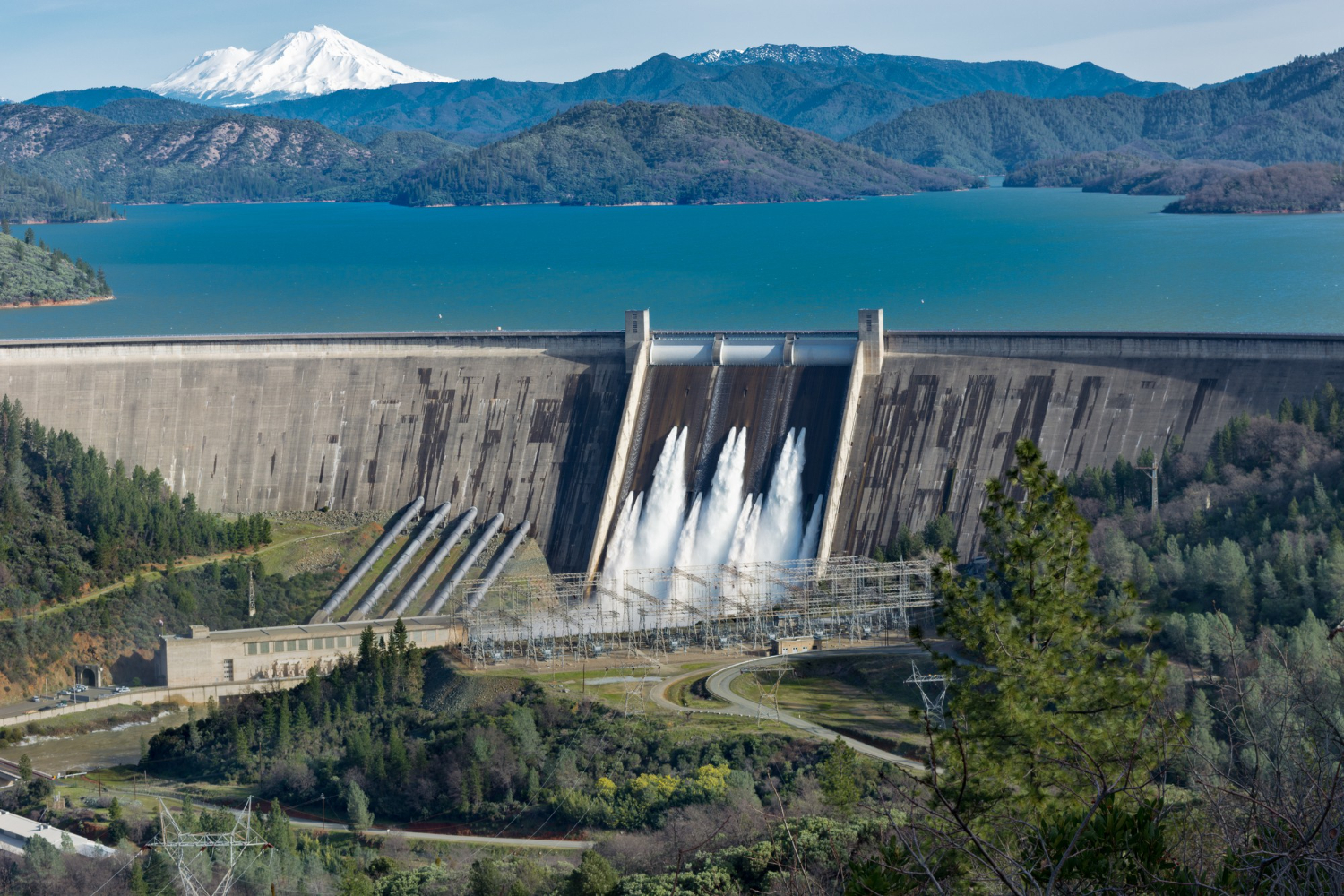
Spillways are engineered for strength and resilience, but they are still vulnerable to wear and deterioration over time. If not properly maintained, a failing spillway can compromise the entire dam system and pose serious environmental and public safety risks.
In this post, we’ll explain the common causes of spillway deterioration and how to address them. If you’re in need of reliable and affordable pond management services, feel free to contact Aquatic Restoration.
Erosion, especially at the downstream end of a spillway or around its abutments, is one of the most frequent causes of structural damage. High-velocity water flow can gradually wear away concrete surfaces or surrounding soil.
The solution to this issue is to install energy dissipators such as stilling basins, baffle blocks, or plunge pools to reduce the speed of water as it exits the spillway. Regular inspections should be conducted to identify early signs of erosion, and repairs should include reinforcing concrete and replacing eroded soil with more stable materials.
Use air-entrained concrete during construction to improve freeze-thaw resistance. For existing spillways, seal cracks and apply waterproof coatings or sealants to prevent water infiltration. Routine maintenance prevents small crack Use air-entrained concrete during construction to improve freeze-thaw resistance. For existing spillways, seal cracks and apply waterproof coatings or sealants to prevent water infiltration. Routine maintenance prevents small cracks s from turning into major weaknesses.

Inadequate drainage can result in uplift pressure beneath the concrete slabs. This undermines the spillway’s structural integrity and can eventually lead to failure.
Install or maintain sub-drainage systems such as weep holes or underdrain pipes to relieve hydrostatic pressure. Monitor groundwater flow during and after storm events and inspect for any signs of slab movement. Quick corrective action can prevent further damage.
Roots from trees, shrubs, or invasive plants can penetrate cracks or joints in the spillway structure. They can exacerbate existing damage and create new paths for water infiltration.
Implement vegetation control programs to prevent plant growth on or around the spillway. Remove invasive species and apply root barriers where necessary. Any visible root intrusion should be treated as a structural concern and addressed as quickly as possible.
This chemical reaction occurs between reactive silica in aggregates and alkaline components in cement. ASR weakens the concrete over time, making it more vulnerable to erosion and structural stress.
Prevent ASR through proper mix design using non-reactive aggregates or supplementary cementitious materials like fly ash or slag. For existing structures affected by ASR, apply coatings to limit moisture ingress, and consider structural retrofitting if damage is severe.
Inadequate maintenance allows minor issues to worsen and can make the spillway more susceptible to serious failures during high-stress conditions like floods.
Establish a regular inspection schedule, particularly after major storms or freeze-thaw events. Document all findings, track deterioration over time, and prioritize repairs in a timely manner. Routine maintenance is more cost-effective than emergency repairs or full reconstruction.
Need help with repairing a damaged spillway? Looking for experts offering siphon installation? Is it time to renovate your spillway? Get in touch with the specialists at Aquatic Restoration. We are a top-rated service provider with over 35 years of experience, countless 5-star reviews, and advanced equipment. We have built an excellent reputation for delivering top-quality pond management services in Georgia. Our goal is to help our customers maintain healthy, clean, and vibrant water bodies. Contact us online or call us to schedule an appointment.
If you own a pond or lake, you know that proactive maintenance is an integral part of keeping the…
If you’ve ever walked outside and noticed your lake suddenly turn a murky shade of green, you’re not alone. Many…
Lakes are vital ecosystems that support wildlife, protect water quality, and enhance the quality of life for surrounding communities. Whether…
If you’re reading this, there’s a good chance you’re sick and tired of dealing with aquatic weeds that never…
Lake management is an integral part of keeping lakes healthy, functional, and beautiful for generations to come. Not only…